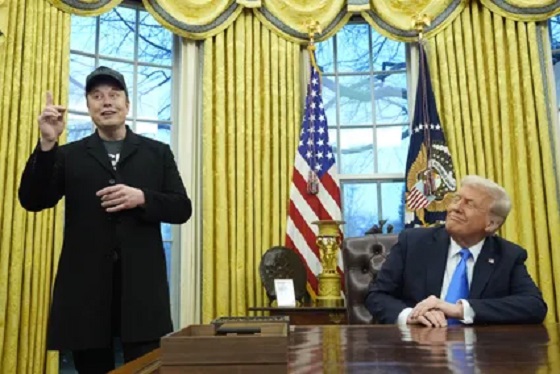Indigenous
Putting government mismanagement of Indigenous affairs in the rear-view mirror
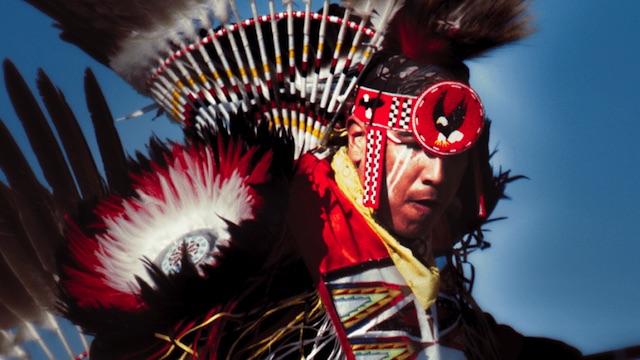
From the Macdonald-Laurier Institute (MLI)
By Ken Coates for Inside Policy
The failures of governance on Indigenous affairs represents an unhappy situation where the problem is, simultaneously, too much government and too little governance
In an era of a mounting number of interconnected complex and difficult problems, one feels sorry for the politicians and civil servants attempting to produce policies, programs, and funding that will make real and sustained progress. We are often confronted with the frightening realization that government, as it is currently structured and directed, is simply not up to the challenges of the 21st century. This is certainly the case with Indigenous affairs in Canada, where the federal government struggles to find the right path forward.
The socio-economic data is clear. Indigenous peoples lag well behind the non-Indigenous population on almost all measures: personal income, access to clean water, educational outcomes, rates of incarceration, health outcomes, opioid deaths, tuberculosis cases, overcrowded homes, and many others. Language loss is endemic, many communities struggle with intergenerational conflict, too many cultural traditions are at risk, and long-term systemic poverty continues to take its toll.
Most Canadians think that the government of Canada is doing a great deal – some people think too much – to address Indigenous challenges and opportunities. They point, as the government often does, to billions of dollars in annual expenditures, formal and public apologies, major court judgments in favour of Indigenous defendants, a seat at a growing number of political tables, and concessions on language, values, and priorities.
The juxtaposition of these two realities is troubling – despite the massive expenditures on Indigenous affairs there are continued and major shortcomings in First Nations, Métis, and Inuit outcomes and achievements. Frustration burns deep in many Indigenous communities, as it does among the general population. Canadians at large have heard the many apologies, hundreds of program announcements, billions in spending, and the near-constant uncertainty of legal processes, and they too are deeply concerned about the failure of decades of concerted government efforts to make things better.
Of course, there have been major achievements. While media coverage focuses on conflict and despair, First Nations, Inuit, and Métis communities have made substantial improvements, even with the current difficulties in mind. Post-secondary attendance remains strong, with continuing challenges with the high school to PSE transition. Indigenous entrepreneurship is a bright spot in the Canadian economy. Modern treaties and self-government agreements are changing how the government manages Indigenous policies, funding, and decision-making. And impact and benefit agreements have secured Indigenous communities an important place in resource and infrastructure development.
But frustrations with the government of Canada’s management of Indigenous affairs continues. Communities complain of long-delayed negotiations, difficulties with payments, the omnipresent influence of the Indian Act, files lingering on the desk of the Minister of Indigenous Services Canada, the inability to get promised money out the door quickly and efficiently, the imposition of complicated accountability provisions, and many other problems. Even major settlements, like the $40 billion allocated to address shortcomings in child and family services, has been bogged down in unrewarding negotiations.
The failures of governance on Indigenous affairs represents an unhappy situation where the problem is, simultaneously, too much government and too little governance. Starting well before Confederation, paternalism became the hallmark of federal policy towards Indigenous peoples. Government officials believed that they knew best and managed Indigenous affairs with scant consideration of Indigenous ideas and goals – and often with a firm, manipulative hand. To the degree that Indigenous peoples escaped the dominance of Ottawa, it was largely due to the shortage of government workers and money, which meant that most northern peoples were left largely alone until the 1950s.
In the 1950s and 1960s, in a massive wave of self-justified paternalism, government intervention expanded rapidly. Indigenous peoples were required to live in government-established and run settlements, typically in government-built houses and under the control of a growing cadre of paternalistic Indian Agents. Residential and day school education became standard fare – as did acute language loss and the disruption of harvesting activity and traditional cultures. Welfare dependency, extremely rare before the mid-1950s, replaced harvesting and the mixed economy as the economic foundations of Indigenous life, with all of the controls and intrusions that attend any reliance on government cheques.
Well-meaning state officials inherited the paternalism of their predecessors, believing that government-designed and -run programs would provide Indigenous communities with pathways to the mainstream economy and the benefits of the dominant society. A few achievements stand out, but generally the effort did not work. Indigenous communities were transformed into frustrated supplicants, relying on a steady stream of applications and approval processes to provide what were typically short-term grants that would fund core community operations.
The arrangements prioritized federal budget-making and administration over Indigenous decision-making and community priority-setting. The budgets grew dramatically. Federal officials made countless announcements. The number of federal civil servants grew dramatically. And individual Indigenous people continued to suffer. Through decades in which state funding and programming continued to expand, the gap between Indigenous well-being and non-Indigenous social and economic conditions scarcely narrowed at all. What did grow dramatically was social dysfunction, self-harm, and family disarray.
It turned out that too much government “help” could be as bad as neglect and inattention to Indigenous needs. Ottawa continued to supply earnest and well-meant programs, but they were built with diminishing enthusiasm from Indigenous peoples. First Nations, Métis, and Inuit communities understood what the government of Canada did not: that community control was much more important and effective than Ottawa-centred policy-making. Much of the Indigenous effort since the 1970s has focused on righting the imbalance, establishing more self-government processes, expanding own-source revenues, and returning to Indigenous peoples the autonomy that had sustained them for centuries.
Indigenous peoples have their own agendas – and they have largely succeeded in changing the core foundations of Indigenous governance in Canada. Modern treaties have, for some people, eliminated some of the more pernicious aspects of the Indian Act and its associated bureaucracies. Self-governing First Nations are become more common and increasingly successful. The Inuit secured their own territory – Nunavut – and acquired considerable autonomy in Labrador and northern Quebec. Impact and benefit agreements and resource revenue sharing have given communities the funding they require to establish their own spending priorities. Duty-to-consult and accommodate provisions have given Indigenous communities a major role in determining the shape and nature of resource development. Major Supreme Court of Canada decisions continue to extend Indigenous authority.
This story of Indigenous re-empowerment has not yet fully unfolded, although the returns to date have been more than promising. Self-governing First Nations in the Canadian North and elsewhere have used their autonomy to very good effect. Communities near the oil sands in Alberta have used their involvement in resource extraction to create substantial autonomy for themselves. Near-urban and urban First Nations are supporting metropolitan redevelopment. Joint ventures and economic cooperation have become the norm rather than the exception. Struggles continue; generations of paternalism and government oversight are not overcome in a flash.
But the primary lesson is simple. State paternalism has been a force for disruption and manipulation of Indigenous communities. Re-empowerment, autonomy, and economic independence have demonstrated the potential to rebuild, enhance, and strengthen First Nations, Métis, and Inuit communities. Decades of government mismanagement of Indigenous affairs must be put in the rear-view mirror. It is time for the re-empowerment of Indigenous communities to become the new normal.
Indigenous realities have changed dramatically, particularly related to Indigenous rights, expectations, capacity, financial settlements and community expectations. Government administration and policy-making, as current constituted, is not sufficiently community-centric, properly funded, appropriately responsive or driven by Indigenous imperatives. Despite generations of large-scale spending and many programs and announcements, basic conditions are far too often seriously substandard and real progress slow and unimpressive. With Indigenous people and their governments in the forefront, Indigenous governance and support requires a dramatic rethinking and Indigenous empowerment in order to respond properly to the challenges and opportunities of the 21st century.
Ken Coates is a Distinguished Fellow and Director of Indigenous Affairs at the Macdonald-Laurier Institute and a Professor of Indigenous Governance at Yukon University
Aristotle Foundation
B.C. government laid groundwork for turning private property into Aboriginal land
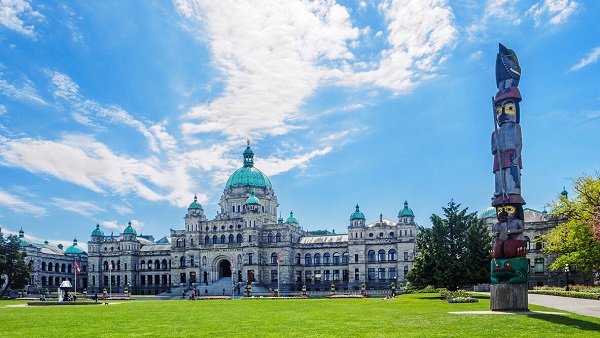
It claims to oppose the Cowichan decision that threatens private property, but it’s been working against property owners for years
A City of Richmond letter to property owners in the Cowichan Aboriginal title area recognized by the B.C. Supreme Court has brought the judgment’s potential impacts into stark reality.
“For those whose property is in the area outlined in black,” the letter explained, “the Court has declared Aboriginal title to your property which may compromise the status and validity of your ownership.”
While Premier David Eby has been quick to disavow the decision, the reality is his government helped set the stage for it in multiple ways. Worse, it quietly supported a similar outcome in a related case, even after the concerning implications of the Cowichan judgment were well-known.
The problematic nature of the Cowichan decision has been well-established. It marks the first time a court has declared Aboriginal title over private property in B.C., and declares certain fee simple land titles (i.e., private property) in the area “defective and invalid.”
Understandably, the letter raised alarm bells not only for directly-affected property owners, but also for British Columbians generally, who recognize that the court’s findings in Richmond may well be replicated in other areas of the province in the future.
As constitutional law professor Dwight Newman pointed out in August, if past fee simple grants in areas of Aboriginal title claims are inherently invalid, “then the judgment has a much broader implication that any privately owned lands in B.C. may be subject to being overridden by Aboriginal title.”
In response to media questions about the City of Richmond’s letter, Eby re-stated his previous commitment to appeal the decision, saying, “I want the court to look in the eyes … of the people who will be directly affected by this decision, and understand the impact on certainty for business, for prosperity and for our negotiations with Indigenous people.”
While the words were the right ones, his government helped lay the groundwork for this decision in at least three ways.
First, the province set the policy precedent for the recognition of Aboriginal title over private property with its controversial Haida agreement in 2024. The legislation implementing the agreement was specifically referenced by the plaintiffs in the Cowichan case, and the judge agreed that it illustrated how Aboriginal title and fee simple can “coexist.”
Eby called the Haida agreement a “template” for other areas of B.C., despite the fact that it raised a number of democratic red flags, as well as legal concerns about private property rights and the constraints it places on the ability of future governments to act in the public interest.
While the agreement contains assurances that private property will be honoured by the Haida Nation, private property interests and the implementation of Aboriginal title are ultimately at odds. As Aboriginal law experts Thomas Isaac and Mackenzie Hayden explained in 2024, “The rights in land which flow from both a fee simple interest and Aboriginal title interest … include exclusive rights to use, occupy and manage lands. The two interests are fundamentally irreconcilable over the same piece of land.”
Second, the provincial and federal lawyers involved in the Cowichan proceedings were constrained by the government in terms of the arguments they were allowed to make to protect private property. In August, legal expert Robin Junger wrote, “One of the most important issues in this case was whether Aboriginal title was ‘extinguished’ when the private ownership was created over the lands by the government in the 1800s.”
The Cowichan judgment expressly notes that B.C. and Canada did not argue extinguishment. In B.C.’s case, this was due to civil litigation directives issued by Eby when he was attorney general.
Finally, provincial legislation implementing the United Nations Declaration on the Rights of Indigenous Peoples (UNDRIP) also played a role in supporting the judge’s conclusions, a point Newman wrote about in August. “They’re used in support of (even if not as the main argument for) the idea that Aboriginal title could yet take priority over current private property rights,”
In addition to setting the stage for the Cowichan decision, and despite their stated concerns with that judgment, the B.C. government has actively sought judicial recognition of Aboriginal title over private property elsewhere.
The overlaying of Aboriginal title over private property with the Haida agreement was already problematic enough prior to the Cowichan decision. However, even after the serious implications of the Cowichan decision were clear, the provincial and federal governments quietly went before the B.C. Supreme Court in support of a consent order that would judicially recognize the Aboriginal title over the entirety of Haida Gwaii.
The successful application had the effect of constitutionally entrenching Aboriginal title for the Haida Nation, including over private property, with the explicitly stated goal of making it near-impossible for future democratically elected governments to amend the agreement.
The reality is, the B.C. government claims to oppose the Cowichan decision even as it laid the groundwork for it, and it has actively pursued similar outcomes on Haida Gwaii. Repeated claims of seeking certainty and protecting private property have been belied by this government’s actions again and again.
Caroline Elliott, PhD, is a senior fellow with the Aristotle Foundation for Public Policy and sits on the board of B.C.’s Public Land Use Society.
Bruce Dowbiggin
Get Ready: Your House May Not Be Yours Much Longer

As political scientist Philip Kaufman explains, “If you keep saying you are on stolen land, don’t be surprised when judges give it away to the natives you said you stole it from.”
“At Dodger Stadium on Monday night, singer JP Saxe re-wrote the lyrics of O Canada. The Toronto pop singer swapped the official “our home and native land” for “our home on native land.”
All things considered the land acknowledgement by Saxe (born Jonathan Percy Starker) is pretty tame stuff in today’s climate where some Canadians are suddenly learning they may not own their homes. But like Justin Trudeau washing “genocidal” Canadian laundry at the UN Saxe’s stunt at the Series is just another sign that Canada’s clever folk remain all-in on humiliating themselves in front of the world over reconciliation.
The latest acknowledgements go beyond an off-key pop singer toying with a song lyric. Just ask citizens of Richmond, B.C. which has sent a letter to residents warning that their property may not belong to them. This after a B.C. Supreme Court judge ruled the Vancouver Island First Nation have won back fishing rights and title for part of the land its ancestors used as a summer home in British Columbia’s Lower Mainland— despite opposition by two other Indigenous communities.
The gormless BC NDP government, which brought on the crisis by refusing to legally challenge native demands in the Blueberry River dispute, says it’s monitoring the Richmond file, admitting “owning private property with clear title is key to borrowing for a mortgage, economic certainty, and the real estate market.” But no promises, folks.
Naturally the locals are not amused. One Richmond property owner, who says he’s owned and paid taxes on his home since 1975, has been told by his lender they won’t be renewing his mortgage after First Nations land claim.

The Eby government settlement— called by Bruce Pardy “an existential threat to the future of his own province”— is part of a wave of claims both written and oral gaining momentum across the nation. As we wrote in August, “Among those properties in question is the Vancouver International Airport in Richmond, B.C.. How slick is that? A Carney government that ran on protecting Boomers’ primary residence cashboxes has now managed to put the entire notion of fee simple home ownership at risk.
As blogger Liam Harlow writes, “Indigenous people will now have an unprecedented, parallel title to private property in that area, a legal first of its kind in a court declaration. This title is declared a ‘prior and senior right to land,’ implying a stronger claim, with the court fundamentally asking “what remains of fee simple title after Aboriginal title is recognized in the same lands?”
It doesn’t stop there. Under UNDRIP (United Nations Declaration on the Rights of Indigenous Peoples) the UN will hold any properties acquired “in trust” for all “aboriginals” as they bicker among themselves for supremacy. Whether Canada’s natives will actually get the land, they will have served as a convenient vehicle for the progressive Left to expand its jurisdiction.
The glass half full on reconciliation holds that Canada’s politicians negotiate a fee with the new native owners to stay on these properties. (Good luck getting a mortgage with the Haida Gwai as co-owners on title.) The glass half empty is your equity goes bye-bye. The decision shocked many earnest Elbows Up types who had no idea their elected governments had fumbled the ball this way.

This is the culmination of decades of federal Liberal acquiescence on the Indigenous file, incompetence highlighted by Trudeau’s pandering visit to a graveyard that contained no alleged murdered babies. Or his refusal to re-open the main rail lines in 2020 when natives blocked the CP tracks.”
Citizens losing their homes in legal disputes should lead every newscast in the nation. Good luck sparking debate on these onrushing crises. As members of the B.C. legislature discovered when they were fired by their party for articulating a few inconvenient facts on reconciliation. The paid-off media, meanwhile, are too obsessed with Trudeau dating celebrity Katy Perry.
The reconciliation fatwa imposed by the Canadian Left powers the ludicrous ongoing spectacle over the Rez School graves. Based on verbal tradition alone, the prime minister of Canada staged pictures with teddy bears when there has never been a murder charge or a family searching for a dead child ever registered in Canada.
Multi-million dollar payouts by the Canadian government to investigate graves produced no evidence of any bodies— mostly because no effort was made. Evidence shows that children in Rez schools might have had a lower mortality rate from TB than those children in their residences. Or even in the general public.
Anyone challenging this reconciliation orthodoxy is fired from teaching positions, expelled from mainline political parties and banned from polite society. No one in Laurentian media seems willing to touch the hot skillet. No wonder polling in 2024 showed 60 percent of Canadians still believe the genocide claim.
Using this blank cheque indigenous radicals demanded land acknowledgements before meetings, political rallies and sports events. To which Woke Canada has caved. A bill in the BC legislature to ban acknowledgements “that deny the sovereignty of the Crown within British Columbia or that attribute collective guilt to individuals based on race, ancestry or the actions of Canadian historical figures” was quashed (88 of 93 MLAs voting no) The MLA behind the bill, Dallas Brodie, was instructed by a fellow PC MLA to get on the “right side of history.”
Meanwhile activists are in classrooms repeating the sanctity of land acknowledgements, ignoring that these lands had turned over many times in tribal warfare. To take just one example, the Comanche used the horse to go from a Canadian tribe to conquering multiple tribes and civilizations across the continent, stealing land and enslaving women and children. But new history mandates that it was their “ancestral” land. The pattern is repeated across North America.
Canadian liberals shrug at this as all just words and theatre. But as political scientist Philip Kaufman explains, “If you keep saying you are on stolen land, don’t be surprised when judges give it away to the natives you said you stole it from.” The BC NDP government’s guilt trip is now producing land claims across the country with warning home owners that, guess what, you may not own your home, either. Like this aboriginal challenge over lands in western Quebec.
There may be better ways to inspire radicalism among normally placid Canadians than kicking people out of homes they’ve bought, but for the moment we can’t think of any. And that’s nothing to sing about.
Bruce Dowbiggin @dowbboy is the editor of Not The Public Broadcaster A two-time winner of the Gemini Award as Canada’s top television sports broadcaster, his new book Deal With It: The Trades That Stunned The NHL And Changed hockey is now available on Amazon. Inexact Science: The Six Most Compelling Draft Years In NHL History, his previous book with his son Evan, was voted the seventh-best professional hockey book of all time by bookauthority.org . His 2004 book Money Players was voted sixth best on the same list, and is available via brucedowbigginbooks.ca.
-
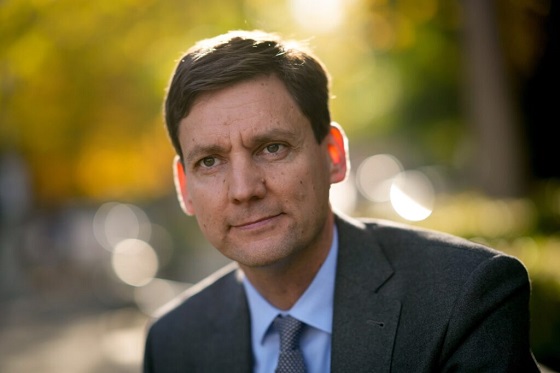
 Energy2 days ago
Energy2 days agoEby should put up, shut up, or pay up
-

 Business2 days ago
Business2 days agoPulling back the curtain on the Carney government’s first budget
-
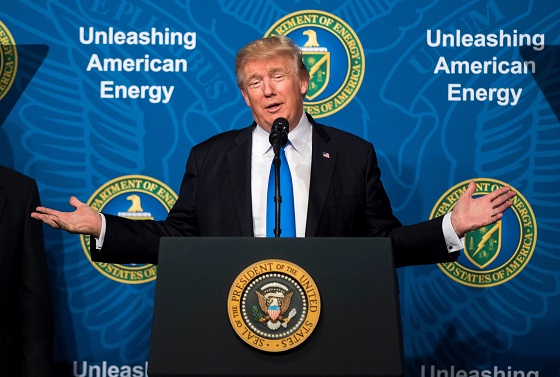
 Daily Caller2 days ago
Daily Caller2 days agoUS Eating Canada’s Lunch While Liberals Stall – Trump Admin Announces Record-Shattering Energy Report
-
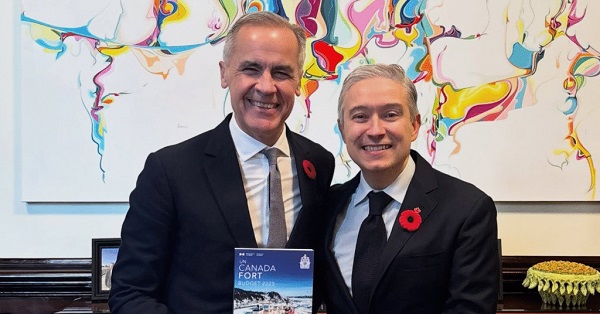
 Business2 days ago
Business2 days agoThe Liberal budget is a massive FAILURE: Former Liberal Cabinet Member Dan McTeague
-

 Business1 day ago
Business1 day agoCarney’s budget spares tax status of Canadian churches, pro-life groups after backlash
-
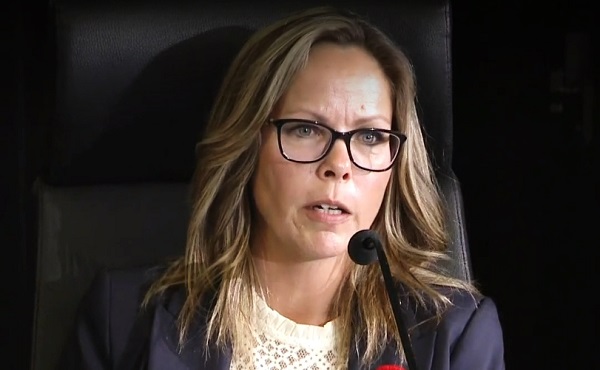
 COVID-191 day ago
COVID-191 day agoFreedom Convoy leader Tamara Lich to appeal her recent conviction
-
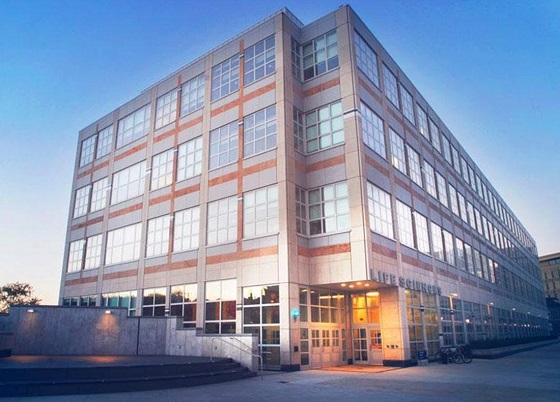
 espionage19 hours ago
espionage19 hours agoU.S. Charges Three More Chinese Scholars in Wuhan Bio-Smuggling Case, Citing Pattern of Foreign Exploitation in American Research Labs
-
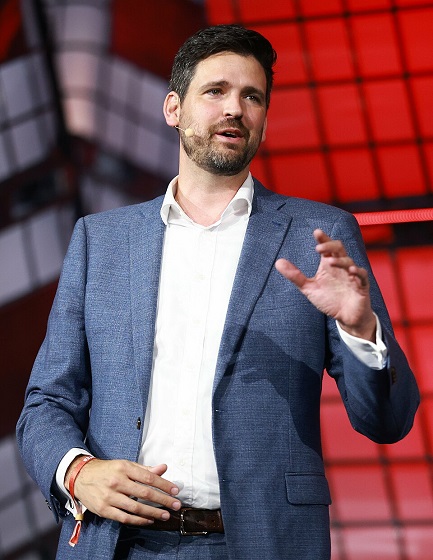
 Justice1 day ago
Justice1 day agoCarney government lets Supreme Court decision stand despite outrage over child porn ruling








